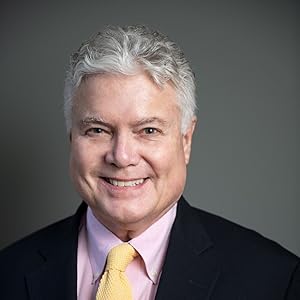
Pansy Bradley
关于作者
Pansy Bradley, is a 50-year-old psychologist who has personally experienced the challenge of raising a child with ADHD. In an effort to help her son and others like him, she has devoted her career to the study of ADHD, trying a variety of methods to manage ADHD and then sharing her findings through her books. Not only has he dedicated his life to learning how to help children with ADHD, but he has also done so by creating effective strategies for adults with ADHD; in fact, after the success of his first book on children, he published a book dedicated to women with this disorder and later a book dedicated to men. Through her personal and professional experience, Dr. Bradley has become a trusted voice on the subject and has published several interviews in a variety of centers. In addition to her work as a psychologist, Dr. Bradley is also actively involved in mental health advocacy and awareness and on initiatives to shed light on the struggles that affect so many people, ensuring that no one is left alone. Part of her research is based on figuring out whether an adult has ADHD and whether children with ADHD still have the disorder once they grow up. Her studies aim to develop the best ways to package mental health treatment so that adolescents and families who need help are more likely to stay in treatment. She has received grants from the U.S. Department of Education and through her research and has been recognized by the scientific community. In fact, Dr. Bradley has received accolades for her growing career at Children and Adults with Attention Deficit/ Hyperactivity Disorder (CHADD). She studied at the Medical University of South Carolina, where she lives with her family and still serves as a researcher. Through her studies, she became an expert on Attention Deficit Hyperactivity Disorder (ADHD precisely). Her studies were conducted in the United States with the support of parents, teachers and therapists who were in charge of children and adolescents diagnosed with ADHD and were treated with alternative therapy. It is estimated that 3-5% of school-age children in the United States are diagnosed with ADHD, and it is a real problem that affects not only families who have children with this disorder, but in their growth, it also becomes a social problem. The techniques described in the research done by Dr. Bradley were passed directly to teachers and therapists in several U.S. schools where they had children with ADHD in their charge, and all reported that children who made use of these techniques had the ability to calm down more quickly, have greater attention span and mental focus, and greater impulse control, than children who did not use them. The commonly noted benefits were as follows: the children showed a reduction in behaviors commonly associated with the ADHD diagnosis, and this was certainly a great result that brought, to all of them, better school performance, increased social skills, higher self-esteem, etc. According to the data Dr. Bradley collected, in 2016, 9.4 percent of children aged 2-17 years in the U.S. had been diagnosed with ADHD, or about 6.1 million subjects (including 2.4 percent who were younger than 5 years old). Two-thirds of these minors were taking medication for the disorder, and about half had received behavioral treatment in the past year. Almost 1/4 of the minors surveyed, however, had not received any kind of treatment. Information obtained in 2014 showed that the average age for diagnosis of the disorder is 7 years. This diagnosis is most often made by a primary care clinician (the PCC, Primary Care Clinician), often a pediatrician. The behavioral therapy suggested by Dr. Bradley is especially recommended for preschoolers. It provides training also for parents and adults whose goal is to make sure they know how to behave to improve the behavior of a child or adolescent with ADHD. In a nutshell, the goal is for parents (as well as school staff) to learn skills and strategies to help their child succeed in school, at home, and in relationships, to prevent and/or respond effectively to phenomena such as aggression, non-completion of homework, failure to comply with requests, etc. Once adolescence is reached, hyperactive and impulsive symptoms tend to diminish on the one hand, but inattention symptoms persist on the other. Boys are more than twice as likely as girls to be diagnosed with ADHD; in addition, both boys and girls often present with symptoms of other mental disorders as well: in the case of boys, it is mainly oppositional defiant disorder or a behavior disorder; for girls, however, there would be a greater chance of presenting with anxiety and depression as well, which is why the writer wanted to broaden the scope of research in adults for both sexes as well. Part of her research compared behavioral therapy and the use of stimulant medication, and she was able to show that although stimulants have a stronger immediate effect on the main symptoms of ADHD, parents feel more satisfied with their children's results from therapy. This is also due to the fact that the positive effects of behavioral therapies tend to persist over time, unlike those of drugs, which cease once they are discontinued. It is therefore likely that optimal results can be achieved when both therapies (behavioral and pharmacological) are used at the same time. According to Dr. Bradley, a key role plays in promoting a better emotional climate in the family and more effective communication with the child, including better defining boundaries and rules to follow. For this reason she decided to found an association that she dedicated to her son with ADHD the "Leslie's family & friends," which acts as a support for parents, families and adults suffering from this disorder and has several meeting centers for activities dedicated to them. Another aspect that he brought forward and found useful in addressing ADHD was the use of Mindfulness, a practice that is based on meditation that has brought results also highlighted in the various researches, and for this reason, he wanted to extend the use of meditation practices to interventions that affect adolescents and children. Meditation facilitates the reduction of aggressive behaviors, increases emotion recognition skills, and promotes functional emotional activation in order to reduce vulnerability toward psychiatric symptoms. The use of Mindfulness practices in working with school-age children also appears to functionally modify the processes of accuracy and response inhibition, promoting the development of increased executive function skills. Attention Deficit Hyperactivity Disorder (ADHD) is characterized by difficulty in focusing attention voluntarily and consistently, a tendency toward motor and cognitive hyperactivity, and difficulty in emotional management. People who suffer from this disorder show inconstant or poor motivational levels and tend toward emotional dysregulation, so they often present comorbidities with behavioral, anxiety or personality disorders. Meditation can be an effective therapeutic integration tool to regulate cognitive and emotional activation states. The interest and results highlighted by various research studies have extended the use of meditation practices to interventions involving adolescents and children. Mindfulness-based protocols have been adapted and used for children or adolescents with psychological disorders and behavioral disorders, especially for the reduction of aggression, self-injurious behaviors (in case of autism) and rumination, extending to family and caregivers as well (Mindfulness-Based Positive Behavior Support, MBPBS, Singh et al, 2014). Considering these characteristics, meditation would facilitate training of the functions of focus, observation, and awareness of one's distraction, positively affecting the skills of refocusing and disengaging from the stimulus and overall attentional and cognitive functioning. In fact, training to gently and nonjudgmentally bring focus back to neutral stimuli, such as breathing or slow movements, would increase self-awareness, sense of efficacy and mastery of one's mind, reducing the impact of particularly painful and intense mental states, as well as the frequency of dysfunctional responses. The constant exercise of observing that distraction overtakes and refocusing attention on something concrete such as the breath, in fact, helps the individual to become aware of the functioning of one's mind and critical distance from one's thoughts. This could effectively counteract the habitual deficit of cognitive and emotional self-regulation typical of ADHD and associated disorders. Dr. Bradley, in her recent neuroimaging study, following Mindfulness-oriented training, was able to demonstrate brain-wide increased activation of the medial orbital gyrus of the right hemisphere. This result seems in line with changes observed in numerous longitudinal studies on the use of meditation in adults, which would seem to facilitate changes in the activation of the cingulate, prefrontal and parietal cortex, the insula, the striatum, and the activation of the amygdala, structures involved in the self-regulation of attention, emotion, and remorse.
阅读完整简历















